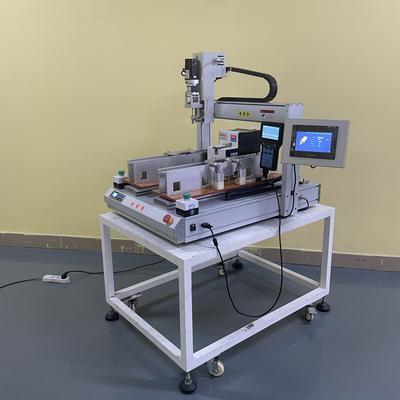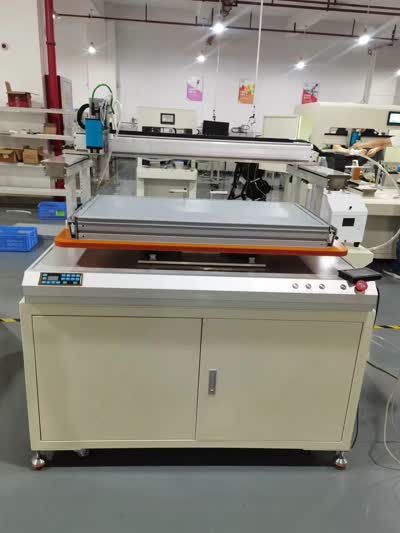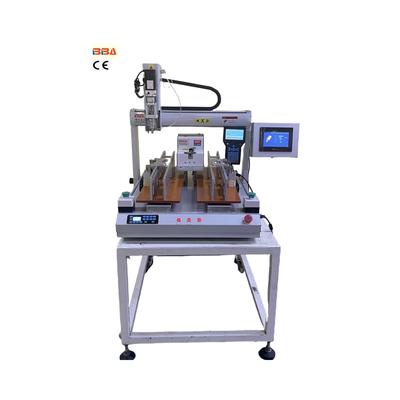Integrate Screw Robots: Automated Assembly Line Solutions
| Product Name | Applicable industries |
| Auto Screwdriver Machine | Medical Device Manufacturing |

How to Add Screw Robots to Existing Production Lines
Industrial automation is evolving rapidly, and screw-driving robots have emerged as a game-changer for assembly processes. Integrating these specialized robots into established production lines offers significant advantages without requiring complete factory overhauls. By automating fastening operations, manufacturers unlock new levels of precision and efficiency while addressing chronic challenges in manual assembly work.
Why Screw Robots Transform Manual Processes
Manual screw driving presents multiple operational hurdles: inconsistent torque application risks product defects, while repetitive strain injuries drive up labor costs and worker compensation claims. Human operators typically manage 10-15 screws per minute consistently, whereas screw robots achieve 20-30+ with micron-level precision on every cycle. Production managers implementing this automation report 30-50% faster cycle times in fastened assemblies and near-elimination of cross-threading or under-torque defects.
Seamless Integration Steps for Existing Lines
Successful implementation follows a strategic four-stage approach:
1. Line Assessment & Feasibility Evaluate current workflows to identify suitable screw-driving stages. Map robot footprints within existing floor plans, analyze part geometries, and verify screw specifications (head type, size, torque requirements). Critical factors include access angles, part presentation consistency, and clearance for end-of-arm tooling.
2. Robot Configuration Select robots based on torque range (typically 0.1-10 Nm), screw feed compatibility (tape, magazine, bowl), and positioning system type. Collaborative models integrate safely alongside workers without safety cages, while high-speed SCARA robots optimize cycle times in dedicated stations. Ensure compatibility with existing PLCs through industrial protocols like EtherCAT or PROFINET.
3. Adaptive Workstation Design Retrofit existing conveyors with custom nesting fixtures using modular components. Incorporate vision systems with OCR algorithms to verify correct screw placement. Prototype tool paths in simulation software to prevent mechanical collisions. Example configuration: A benchtop SCARA unit mounted on adjustable risers, equipped with automatic screw feeders and integrated error-proofing sensors.
4. Deployment & Validation Phased implementation minimizes downtime – first commissioning offline, then conducting Poka-Yoke (error-proofing) trials with dummy units. Calibrate torque sensors against digital twins of production parts. Operators receive augmented reality training showing real-time torque feedback visualization. Final validation includes running 500+ test cycles with torque audit trails.
Operational Advantages of Robotic Fastening
Manufacturers report transformative outcomes within months:
- 97-99% consistency rates in torque application
- Recoup setup costs in 8-14 months through reduced scrappage
- 40% reduction in work-related musculoskeletal disorders
- Flexible reprogramming for new screw patterns versus mechanical jig redesigns
The latest robots offer AI-driven predictive maintenance features, monitoring motor current signatures to flag drill-bit wear before defects occur. Seamless data integration feeds into MES systems for comprehensive OEE tracking including cycle interruptions and torque anomalies.
Future-Proofing Your Assembly Operations
Incorporating screw robots creates ripple-effect improvements: freed operator capacity shifts to value-add tasks while automated quality compliance enhances customer satisfaction. Modern integration kits enable commissioning within existing shutdown windows. Supplier ecosystems now offer leasing options eliminating upfront capital barriers.
As product lifecycles accelerate and quality standards tighten, robotic fastening transitions from competitive advantage to operational necessity. The integration window is optimal—today's modular solutions deliver immediate ROI while creating infrastructure to scale automation. Start by piloting a single critical station; the efficiency leap often drives rapid expansion across production lines.


